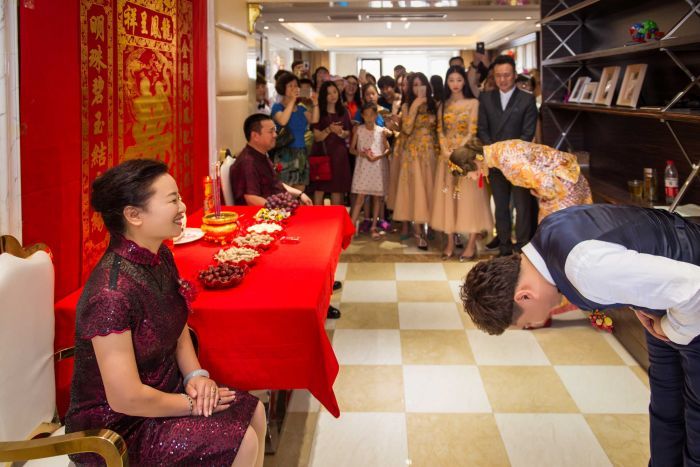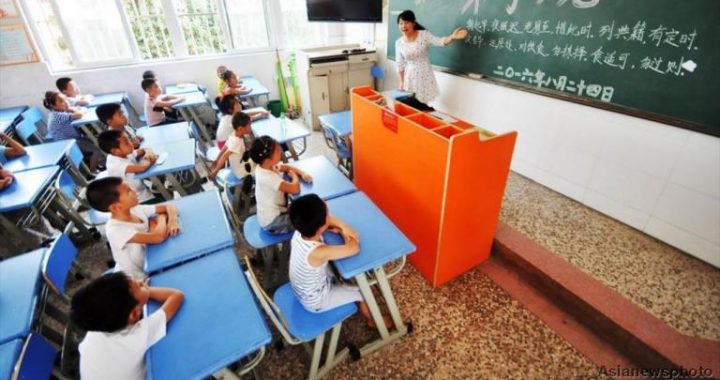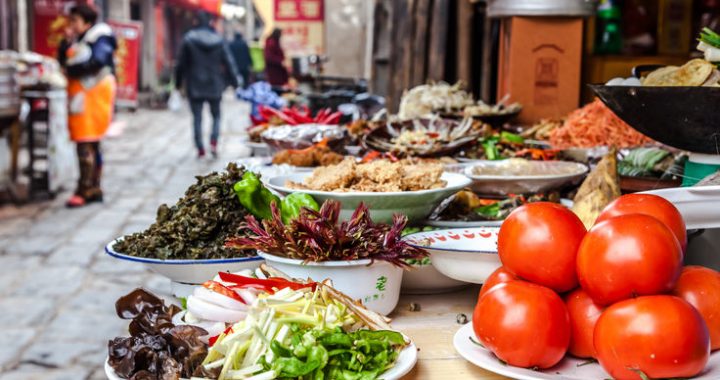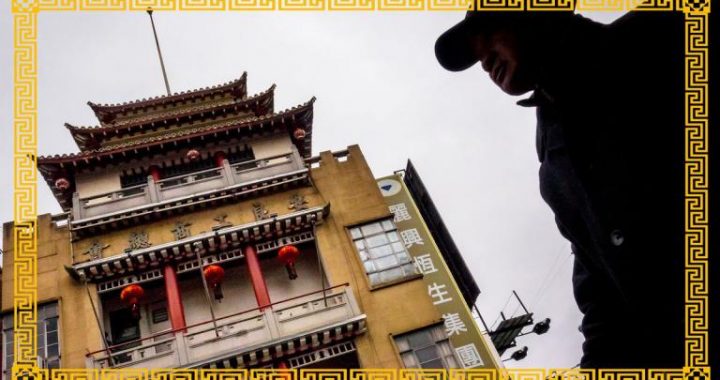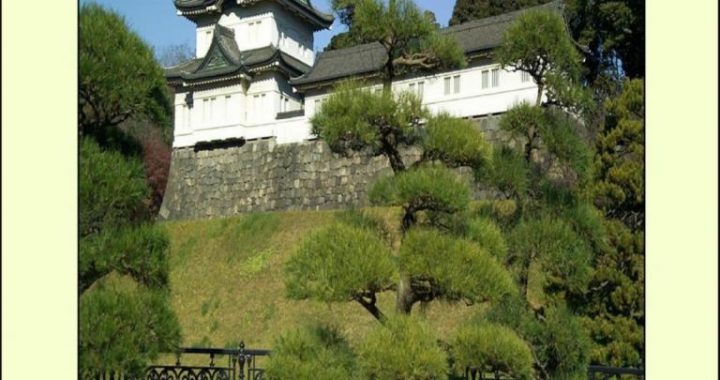Marriage in Chinese Society
33 min readMuch of the ritual still associated with Chinese marriage was established many centuries ago. Even in the twenty-first century after seventy years of Communism, ritual usually remains more important than the state’s marriage certificate. It is still the ritual, not the certificate, that solemnises the marriage.
In the West the Christian church marriage ceremony, which offers a slight parallel to Chinese ritual, is in dramatic decline. Only one-third of English weddings during 2012 took place in religious premises. Chinese wedding ritual, determined in part by the region within China and in part by the wishes of the families, retains a dominant place.
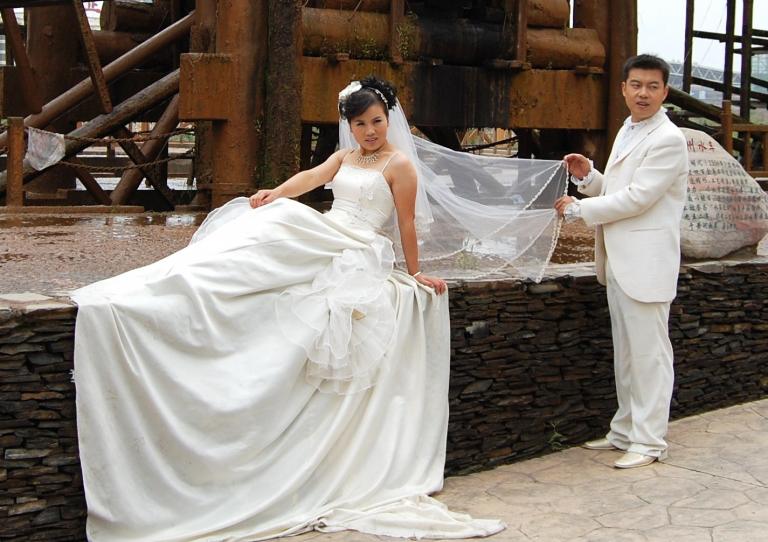
In Wuzhen there is a Wedding Museum. It addresses more than the physical arcana of a Chinese wedding. It explains to visitors the place of wedding ritual, the history of wedding certificates and reflects the role of family in Chinese society. The museum is in Xizha, the western part. It occupies a timber-clad two-story building with four small courtyards. It is just the sort of home to which two wealthy Wuzhen families would have sent their newly married children.
It is astonishing to the Western observer how strong the threads of the Chinese extended family remain. Despite the asaults upon the family from the one-child policy’, from separation of the urban working fathers from their rural families and from women’s liberation, traditional family values have endured.
There is no rival in the West to China in the quantity of rigid ritual surrounding the role and importance of family. In choosing to house a Wedding Museum, which reflects also the role of family, Wuzhen has once more put its finger on the cultural pulse of China.
Confucianism places marriage at the beginning of ethics and as the essence of etiquettes. The Confucian Book of Rites is focused on these issues. It also contains long sections about the meaning of the marriage ceremony. The Book of Rites was studied deeply by all scholars aspiring to triumph over the sageswho controlled the Imperial Examinations. These scholars, the literati of China, were educated to believe in the importance of family. Their influence from within bureaucracy ensured that the framework around the Chinese family was maintained.
One hall of the Wedding Museum is dedicated specially to marriage beds— itself a small Museum of Marriage Beds. The Victoria and Albert Museum, London, sometimes displays the few beds it possesses but they are displayed for the artistic value of their linen coverings, of the carving on the bedstead or because of some particular historical association. The British Museum even occasionally places a traditional bed from northern China on display and another from ancient Egypt, but rarely an English bed. This should not surprise since British museums always inform more about other cultures than ever theydo about their own. Indeed visitors from China might reasonably exclaim after visiting London’s British Museum as to the whereabouts of the ‘ Museum of British Culture’.
In defence of British museums on this occasion English beds simply have less cultural interest than those of Chinese origin. It is the ritual at the heart of so much of China’s cultural history that makes their beds of interest and the Wuzhen Museum of Marriage Beds possible. Not much can be concluded about the place of family in English society from English beds. The chance of there being a museum of wedding beds in England is small. There is a different situation in China.
The most famous Chinese bed museum is in Chongqing, in southwest China.A total of twenty-two beds from the last imperial dynasty, the Qing, are displayed. If the wedding night could be a nervous time for a Chinese bride, the scale and elaborate designs of these beds were unlikely to have provided much reassurance. At a museum in Chengdu there is a bed from Ningbo,a cityin Zhejiang not far from Wuzhen. It is enormous. The bed comes with storage drawers, shelves, wash-basins and a toilet. It could have accommodated dozens of young brides at once, or made one small bride feel particularly vulnerable.
One Chinese bed has a brick platform,a kang, under which a fire could be lit and on top of which the family slept. In the day the bedding would be folded up to create a warm sitting area. Eating, cross-legged, on top of a kang is possible inChinese restaurants in the north, which seek to re-create past cultural practices.
The original bed would have been covered with heavyweight decorative silk in the winter; in the summer lighter material such as banana tree fibre or a Suzhou fine blue gauze might have been used.
The beds on display in Wuzhen are of a southern Chinese style and draw attention to the cultural differences between north and south China. There wasrarely a need for kang-styled heating. Indeed, in the twenty-first century when a Western visitor to Wuzhen might just appreciate central heating in the winter months, it is usually unavailable. There is air-conditioning as the Wuzhen summers can be humid and hot, but rarely heating. Instead winter visitors and local staff alike move around the inside of buildings wearing thick puffa jackets whilst often the doors and windows are left wide open. This chilly period only lasts a few weeks. Southern beds are usually simple in design. Their pillows and mattresses are also much harder than those of the north. This tradition is maintained in modern hotels. As the Western traveller moves southwards in China the mattresses shift from a familiar softness to a hardness akin to rock. Good as this may be for the spine, it is not always enjoyed by the visitor. There is also a tradition of sleeping on hard pillows, some made even of porcelain or decorated wood. This practice can also mystify visitors to China.
One of the beds on display at the Wuzhen museum dates from the Ming period, pre-1600. It is of a simple design with neither the elaborate decorations or complex accoutrements associated with northern beds. There is another late Qing bed which reputedly required a thousand craftsmen to make. There are also written histories on display beside each bed in this Wuzhen museum which instruct about bridal bed culture. They tell of how an auspicious date and time must be chosen for its installation, how lamps must be placed either side to symbolise the wish for sons and why various fruits, heavy with symbolism, should be left on the bed. Red is chosen both for the sheets and the bride’s dress. Red is considered to bring good fortune through being the colour of fire.
As it symbolises good fortune and happiness, the colour may never be worn at funerals. Such rituals embraced at weddings and at so many festivals reach deeply into Chinese society. It was the wish of Communists in 1949 to end them. They represented a connection to the old regime yet many rituals have survived. However, the pressures of urbanisation in the age of the internet will probably prove a greater destructive force of tradition than the Communist Party. When so many of society’s values are finally changing so much, the creation of a marriage ritual museum in Wuzhen is to be commended.
As liberated from many rigid conventions as young Chinese seem to be, the shadow of these cultural practices is still discernible.A search through Alibaba’s Taobao, the Chinese virtual trading platform similar to Amazon but much larger, reveals vast numbers of beds sold under the tag-line ‘ wedding beds’. Asimilar search on Google yields nothing other than companies bidding to host wedding present lists. Alibaba was established by Jack Ma, who was born close to Wuzhen in Hangzhou. In 2015 it made a £4.5 billion trading profit; Amazon posted a £200 million loss. For shareholders, however, Amazon’s share value continues to rise whilst Alibaba’s flatlines. Such are the workings of modern financial world. Each year Alibaba’s most important day’s trading is called Singles Day. Where England mourns those killed in the First World War on November 11, China chose this date,11.11, with its affinity to the number one to celebrate the state of being alone, of being single and unmarried.
Singles Day started in the early 1990s as an opportunity for young unmarried people to meet and find a partner. In a sense the day therefore beganas a response to the pressure to marry. However, in an example of how traditions are weakening, it has been turned round and is used more as a celebration of being single. The idea that unwedded life could itself be celebrated was radical.
This idea alone must have had great appeal to the young, if not their parents. It has become a celebration of spending money on oneself. The success of Alibaba—£14billion worth of trade was recorded on Singles Day in 2016-has destroyed the original idea of helping the young meet partners. It is now simply a day of mere, but massive, commerce.
The wedding clothes and bed covers on display in the museum are red and made of silk. Even those with modest wealth, particularly in Wuzhen, the home of silk, would have possessed clothes of silk for special occasions.
Mr Lin in the novel by Mao Dun about Wuzhen life struggled financially, yet even his daughter owned a silk dress until it had to be surrendered to the pawnbroker. In the past, the Chinese bride generally wore a red wedding dress.
In twenty-first-century weddings the bride often has a thick wedding album prepared in advance of the wedding, picturing her in a white dress at varied romantic locations, some even abroad. There are now companies which arrange photographic bridal tours. Brides, for example, posing on swards of grass along the romantic Yantai peninsula of Shandong province in north China are a common sight, as they must be in all manner of places. Richer couples can arrange such tours overseas. It is no longer an unexceptional sight even in Cambridge; Chinese brides, sometimes shivering in their finer gowns, pose as near to King’s College Chapel as a distracted college porter will permit. It is not surprising that Wuzhen has been used as a romantic backdrop for films and TVdramas.A love story shown on television as Si Shui Nian Hua,”Things Past’, in 2003 was filmed in Wuzhen. There was no wedding ceremony but it probably caused many brides to bring their photographers to the town.
On the wedding day itself a red dress is still usually worn, but the Western idea of a white dress for the ceremony is gaining ground. Whatever the colour, dresses are usually hired, as opposed to the expensive purchase of the One-Day Wonder Dress in the West. These are the new traditions which are being mixed with the old. Before the 1900s, the richer Chinese bride would travel in a bridal sedan chair, buajiao, whose silk wraps would be heavily embroidered and predominantly red. In Wuzhen the rich family’s bride travelled with similar decorations but by boat along the water way to the temple. The wedding boat has a special name, xichuan. Such a wedding progress is actually little different from those of medieval Italy. An Italian bride would travel through the town ina sedan chair proceeded by a richly decorated casone,a marriage chest, in front of them. Indeed the Wuzhen museum displays a red lacquered timber wedding wardrobe.
The Chinese wedding bed and sedan chair would be decorated with symbols of fertility such as gourds and pomegranates, which each contain many seeds.A pair of birds, which seem to the Western eye to be similar to pheasants, delivered the same message. There is no suggestion, however, of the handsome brightly coloured large male cock pheasant dominating the small dull-feathered female hen. Both these marriage birds are equal in size and share resplendent feathers. These were symbols of a happy, fecund union. Images to decorate the beds were also sometimes used, such as of the five sons selected to enter the imperial ministries after examination’, which suggested the happiness which could flow from fecundity. These successful males represented the ultimate hope of a Chinese family and in fact existed. They were the Dou Yujun family from the tenth century and frequently served as inspiration for painters; the most famous work painted of them is by the artist Ren Yi in the late 1800s.
Written rituals binding a couple to engagement were followed long before they were even matters of consideration in the West. The oldest texts covering such family rituals go back to the dynasties of Zhou and Han, several hundred years before Christ. Marriage was central to Confucian thought about ritual, or Li. Li concerned human nature, ethics and therefore social harmony.A society which observed ritual, be it concerning marriage, birth or death, would be secure and stable. Social and political philosophy was closely tied to marriage culture from the beginning of Chinese society. There is no parallel to this approach in the West.
Another scholar, Zhu Xi, during the Southern Song dynasty in the twelfth century wrote On Arranging a Marriage. His work was part of a broader work Family Rituak. There has simply been no such written advice with wide acceptance in Europe. In the West traditions were passed by word of mouth andby example. In China the same traditions had ancient written works in support of their authority.
There was certainly Western marriage etiquette which was expected to be followed, but only very rarely was it recorded in writing. In the late 1800s the Victorian women were offered plenty of advice as to how marriage itself was best conducted, or at least survived. However, very little was written on the tradition of the marriage ceremony itself. Written advice was more likely restricted to such offerings as made by Mrs Beeton in the mid-1800s. Her contribution concerned household management with cooking advice on cake-making rather than wedding ceremony and marriage bed etiquette. In the West there was a casualness about marriage which never existed in China. Both betrothal and marriage were less bound by ritual.
For centuries in England marriage could effectively result from the Celtic custom of Hand-Fasting which amounted to a binding union and almost a trial marriage. Using modern terminology, it was more akin to a Common Lawmarriage, one bound by personal and private commitment, barely requiring a witness. The ritual was minimal. Famous examples of such marriages abound in English history. The body of one of the earliest kings of England, Harold, was recognised on the Hastings battlefeld in 1066 by Edith Swanneck, his Hand-Fast wife. In the 1540s the young Queen Catherine(Howard), one of the many victims of the murderous Henry VIII, may well have had a Hand-Fast husbandin Francis Deerham. Both were judicially murdered by Henry. It is suggested that William Shakespeare started his married life with Ann Hathaway througha Hand-Fast ceremony. This apparent casualness reflected both the absence of ritual and relative freedom of the individual. The English Church only became involved when the state sought more power over society in the early 1600s. The Church then reminded that marriage was one of the seven Holy Sacraments and was unbreakable particularly because it had occurred within a church in the sight of God. However, the ritual around marriage never approached the rigidity found in China.
The age of written records in China is astounding to the Western observer.
From the oracle bones of Shang dynasty a thousand years before Christ through to the marriage records of the thirteenth-century Yuan dynasty, there is nothing comparable in the West. They certainly assist the historian’s study of ancient China. There were numerous rituals fitted to the omens of the couple’s birth dates; for example, guests were excluded if their own birthdays fell in Zodiac years with poor omens. Women were expected to practise the ‘ Three Obediences and Four Virtues. The daughter obeyed first her father, then her husband while married, and her son in widowhood. In China such obedience was so natural that it did not require the woman to make the specific vow imposed on the Western bride.
Doubtless the fiery independence of the Western female prompted the introduction of the 1662 Church of England Marriage Service of a vow offemale obedience to their husband. The vow was simply a transcription of various New Testament Biblical exhortations. However, the lightness with which this vow was given by women is reflected in their frequent cheerful claim that they had crossed their fingers’ during the service, thereby negating the promise to obey. The Anglican Church service since 1966 provides the option to remove the vow of obedience as it was thought too akin to subservience. The Four Virtues expected of Chinese women -morality, proper speech, modesty and diligence— are doubtless an equally out of date expectation of the modern Chinese male.
The Wuzhen Wedding Museum includes a gallery of twentieth-century marriage certificates with pictures of timid, bold, anxious, dewy-eyed, or hopeful newly-weds, which leave the visitor wondering how they later coped with life and each other. English births were not recorded in parishes until the late 1500s, and marriages in the early 1600s. However, births in China were reliably recorded through the baojia system from the eleventh century.
Through the number of households taxation was levied, responsibilities for order allocated and contributions to the vast civil projects expected. Such recordkeeping was considered essential. This system is effectively the forerunner of the bukou population registration.
The earliest wedding certificates, literally translated as Hun Shu, appeared in China in the mid-1800s. They were also known as He Hui and used mostly in the Taiping Christian areas. Certificates also exist from the Qing Emperor Daoguang in the same period but their use was not widespread.During the last Qing emperor,Puyi,who reigned up to 1911,certificates were issued more widely and probably seen as a means of promoting Western cultural practices.
Although the wedding certificates became compulsory in the early twentieth century they still do not represent the essence of marriage to twenty-first-century Chinese.
At the heart of a Christian wedding service in the West is the priest’s formaldeclaration that two people are man and wife.To satisfy the state the registry must then be signed,as it must in a non-religious marriage.The equivalent in China is difficult to identify precisely.For most in China it is the removal of the red shawl which covers the bride’s head and shoulders,followed by the declaration by a special friend of the family that the marriage is complete.The shawl itself signifies virginity,pureness and youthfulness,though without earlier research none of these qualities could be ascertained through the heavy shawlon the day.
The shawl’s removal comes only after the Three Worships had been made.Known as San Bai,sanbai,they comprise first obeisance to Heaven and Earth,secondly prayers offered to ancestors,and finally promises of filial obedience to each set of parents.The shawl,with the approval of the Gods,is then removed delicately by the groom and his wife is visible to all.The Wuzhen museum tells of how the ritual continues after the wedding ceremony.Bride and groom must kowtow three times before entering their nuptial chamber.The first kowtow is to Heaven and Earth,the second to their parents and the third one to each other.The English custom of the groom carrying the bride over the threshold seems modest in comparison.It is difficult to find the English equivalent of these ritualistic obeisances and kowtows.They emphasise the greater strength of rituals within Chinese society.
In China there was,and remains to some extent,the tradition of fu mu zhiming, mei shuo zhi yan. It means the family were in control of their children’s engagement process.A free courtship was simply not permissible, as had been the case in most eras and for most social classes over centuries in England. It was immoral and unacceptable for the young to asume such freedom. In China the formality of this process of parental approval is only slowly disappearing.
Parents’ blessing is, however, still sought. In the West it is simply thought to have nothing to do with parents. It is consequentially easier in the twenty-first century to meet young people whose relationship has been ended through parental disapproval in China than the West. Parents in China will also be far more outspoken regarding their disapproval of a new daughter-or son-in-law, making it clear their approval must be earnt by subsequent conduct duringthe marriage. In so many avenues of China’s story, one constant seems to be control over the individual by the state, by the local community, by parents or by family. This is perhaps changing in the twenty-first century but only slowly.
For better or worse, and at times it has been both, there has long been more personal freedom in England.
Unlike, for example, the French but similar to the English, Chinese students live away from home for the first time at university. Privacy is less than in English universities, as four or six students usually share a small dormitory.
Yet the mixing of the sexes is obviously near total. Social control is thus further diluted. Parents fear the introduction into their family of some unsuitable partner found in the social maelstrom of a student community. China now sends fifty per cent of its young to university, against probably forty per cent in England. The number of young adults spending three or four years away from home constitutes a recent yet huge dilution of family authority. Neither can parental influence be maintained as some would wish amongst those five million Chinese students who are studying overseas at any one time. They are even further out of reach.
Nonetheless, it is not considered unusual for two young Chinese, who are dating at Cambridge University, to arrange a meeting with the four parents back in China during the annual pilgrimage home for the Chinese New Year. This festival, when the young are swamped with ageing relatives, is the time of peak pressure from parents upon children to marry, especially someone approved.
Young Chinese still talk of the need to obtain a parent’s blessing to marry; they might proceed to marriage in any event, but it is an approval that is very much sought. One side in China can still in the twenty-first century disruptengagement plans. There is even an ancient phrase, men dang bu dui, to prevent an unsuitable marriage. It is difficult to think of an English equivalent phrase.
More loosely it could be interpreted as a need for the young people’s family to have’ matching doors and parallel windows. Many older folks, from sometimes good motives, in every culture would support such a viewpoint. Marriage canbe difficult enough without the added pressure of misunderstandings which can arise from a social class background, or a culture, which is not shared. Such practical views, perhaps common in both China and England, are, however, less likely to be shared by the young.
The Chinese marriage certificates on display in Wuzhen provide one example of these controls. Until 2003 a certificate required validation from an employer or a community leader. The state was clearly very involved. The needto obtain the employer’s agreement and meet parents’ expectations must have caused immense frustration and, at times, sadness. Having to seek permission from everyone else to marry will always cause resentment. It is also another indication of control over individual actions.
Modern wedding ceremonies are usually very commercialised, just as they can be in the West. The option of being married modestly in a rural villagehas been replaced by urban-based wedding companies delivering what used to be referred to somewhat disdainfully in the West as a ‘ cheque book wedding’.
The Chinese wedding company will direct the ritual, acting as a quasi-priest prompting the bridal pair when to bow, to tell stories or to uncover the bride’ sface, while the guests sit at large round tables eating and drinking. The average cost of an English wedding in 2014 had risen to £21,000. The average cost ofa Chinese wedding is similar at 200,000 RMB. Where the costs used to be borne in China by the groom’s family, and in the West by that of the bride, they are now in both countries generally shared according to means between the families of groom and bride.
In the West the bride, aware of her traditional father’s expectations, might just persuade her fiance to seek permission from him to marry her. If such a request occurred at all, it would be more a statement of fact than a question posed to the future father-in-law as to whether the latter approved or not. The Chinese parents are far more involved. One recent survey in the newspaper China Youth Daily reported that eighty-nine per cent of young singletons were forced to go on dates with people approved by their parents. This does not happen in England.A recent selection of this newspaper’s articles covered ‘ Nine Bad Habits That Keep Leftover Women from Good Men’ and ‘ Eight Categories of Leftover Women’. Such articles would not command a readership in the West. Journalists, usually female, in Western papers occasionally write of the selfish reluctance of immature, ageing, Englishmen to commit to marriage.
Never is the blame implicitly that of the woman as it is in China; if there is fault to be allocated in the West it is laid at the feet of the men. Men can be blamed more in the East as well. One clever Chinese girl commented publicly that most of the dates her mother organised on her behalf were unsuccessful once they learnt she had a post-graduate qualification. There are insecure men everywhere it would seem who cannot cope with a clever woman.
The influence Chinese parents still exercise over their children would surprise many in the West. They interfere more in the lives of their young adult children than their Western counterparts. The Chinese parent often justifies the interference through claiming how competitive modern life has become. Parents consider their direct help at all ages, and in many forms, essential. It also hasmuch to do with the tradition of control, of the child’s duty to obey and otherprecepts laid down by Confucius which still influence society. Paramount in the areas in which parents wish to play a role will be their child’s marriage. It will certainly still eclipse their interest in a daughter’s career.
Such involvement with their young has led to Chinese marriage markets, which are, however, run by the parents. Families in the West have also long since tried to create situations where appropriate’ partners might be found, be they attending the royal court as young Ladies-in-Waiting to Queens, Debutante Balls in the past or Speed Dating in the present. The difference with China is that it is the parents of unmarried children alone who try to conduct such matters in the twenty-first century. Since 2004, to provide but one example, parents have traded information about their children at the Shanghai Marriage Market. Succinct curriculum vitae, or rather claims that their daughter is kind, obedient, beautiful and their son handsome, rich and in a good job, are often written on a piece of paper and stuck to an erected umbrella. The parent stands behind the umbrella. Parents apparently rarely have the permission of their children for such a public exhibition of their virtues.
Many in China are relieved that the market has not been particularly successful, but it continues. Its continuation most probably reflects parents’deep concern, almost confusion, at the rapid rejection by many of traditional wedding procedures. Easy to mock, such parental interference is rooted in a love for their child. They worry for their children’s future like every parent everywhere. Marriage and children also ensure the parents would be looked after in their old age; the Chinese phrase describing this social insurance policy behind having children is yang er fang lao. In a country which remains sparing in its financial care of the old this was a crucial part of their social structure.
Fewer adult children living with their parents, the ‘ one-child policy’ and massive emigration from the countryside have diluted the asurances to the old which married children provide.
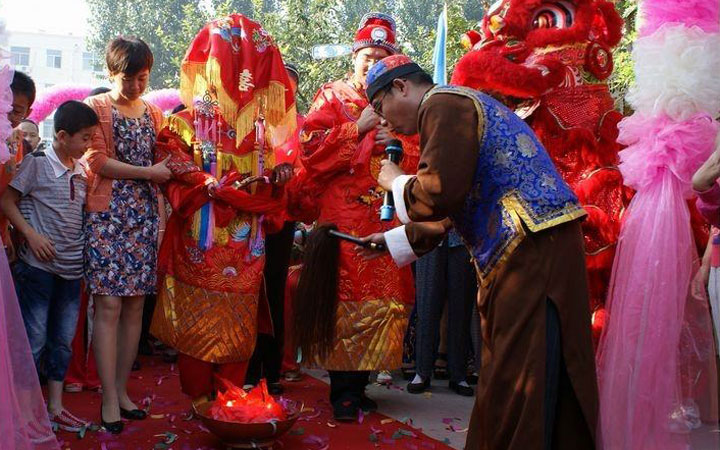
Ritual around all relationships between the sexes dominates Chinese society more than in the West. Cohabiting without marriage is so much the norm in England that it is barely commented upon. It also happens much along the east coast in China, but it remains, if not a situation of shame for the family, then one that is not discussed. Parents might tolerate the situation with reluctancebut grandparents and decaying aunts back in the countryside would not be told. Interestingly the pressures against cohabiting in the West came primarily from the Church, hence the phrase living in sin’,a sin against God’s teaching because presumably it was unthinkable. There is no similar phrase in Chinese which might bring down the wrath of Confucius. The Chinese presently use the phrasetongiu. It is simply a literal statement that two unmarried people are living together.
Religions in China, of Taoism, Buddhism and Christianity, all condemn such conduct but the pressures to marry came from the family and up to 1989 from the law. China’s Supreme Court now rules that cohabitation is an entirely personal matter.A 2015 study by the China Association of Marriage and Family found that sixty per cent of those born after 1985 cohabited before marriage; the figure was one per cent in 1980. These recent figures put China on parwith America and ahead of England. China’s social structure is changing atastonishing speed,a speed which enhances the contribution such museums as those of Wuzhen can make. Cohabitation remains a topic of discussion on social media in China, in part because Chinas major religions of Buddhism, Taoism and Christianity are increasingly vocal in their opposition to this development.
The reasons for cohabitation are similar between the East and the West. Urban-living away from the smothering pressure to conform in rural communities, more money so less dependence on parents, availability of contraception, and the youthful perception that it is innovative behaviour which challenges the older generation. There is one sense in which China lags behind in its treatment of cohabiting couples. The law does not attribute any legal marriage rights to either party and it is still very difficult for any offspring to obtain the all important bukou residency permit on which access to education, healthcare and every other public service depends. This amounts to a considerable pressure to marry, one which is totally absent in the West.
There are possibly thirteen million young people still in the position of being an undocumented bei baizi, or a ‘ black child’ born out of wedlock, combined with second children borne without the state’s approval. It is also weakening the strength of family amongst many Chinese.
Nonetheless, the pressures on children from parents to marry, and to marry someone appropriate, remain far greater than in the West. Selective abortionsto ensure boys are born will lead by 2020, according to some estimates, up to a thirty million surplus of boys. Pressures to secure an appropriate bride are immense. In addition many young women are marrying later for the same well-known mix of reasons as they are in the West. Better education, higher expectations of a partner and the wish to establish a career are motives which have even reduced further the number of women who wish to marry at a young age. There is a worldwide increase in people rejecting the convention of marriage. Although the numbers in China, fifty-eight million, estimated to be living alone may shock, it only represents fourteen per cent of total households.
In Norway thirty-eight per cent of households have single occupancy, in Germany thirty-six per cent and England thirty per cent.
The Chinese ratio of male to female births is 118 to 100, against a global average of about 105 to 100. This imbalance is due to the illegal foetal sex determination in a culture where traditionally boys are indulged and girls merely tolerated.A normal birth rate would have produced a further sixty-six million girls, almost ten per cent of the female population.
In reality the one-child policy was more of a one and a half child as there were numerous exceptions made for such as famers, fishermen, miners, ethnic minorities and indeed for those who could afford the fines for the second child. The government’s name for the policy was never the one-child policy, rather it was Jibua Shengyu, or planned birth programme. It is easy to list thedamage wrought by this policy of compulsory birth control. The ‘ lost sixty-six million girls’ has been mentioned, as has the upsetting of the sex ratio reducing opportunities for men to marry. The extended Chinese family had provided a support network, both to help in the rice fields around a town like Wuzhen andto help deal with the financial and other personal blows of life. The extended family was at the heart of Chinas social structure. Since 1979 the width of the extended family has been radically trimmed. Its effects will be felt for years to come. This policy will prevent the growth of new branches on the family tree.
Recently a Western traveller in China who perhaps might mention his four children was looked upon enviously, almost as though they hail from another planet. Young women, who are no longer perhaps quite so young, murmur of how they would have treasured the chance to have a second child. Instead inanother unintended outcome the Chinese are raising a generation of princes and princesses who receive the undivided attention of up to six adults, the Four-Two-One Syndrome. Social media forums address the issue of how the Little Emperor, or Empress, Syndrome is best dealt with. The government also issues homilies on the matter. Recent academic research has found that the negativeimpact of so much attention is exaggerated. Nonetheless, intuitively it seems damage from over-attention is likely. Neither is it all about spoilt children behaving badly. The pressures on these single beacons of future familial glory to bring economic prosperity can be huge. Some children will be excessively diligent, others will rebel and some will surely collapse.
Parents who lose their only child are known as shidu, literally ‘ lose the only. They must suffer terribly. Between 1979 and 2001 there were one million families who were so tragically affected. By a cruel twist of fate the centre of the 2008 Sichuan earthquake occurred in Shifang county, Sichuan. This was the place where China had trialled its ‘ one-child policy, and many families losttheir only child. Of course it is in no sense comparable to the tragedy of childloss, but at any one time there are also five million students who study abroad.
Many of them sadly return neither to their homeland nor their parents, who are then almost left in a similar position to shidu.
There is yet another consequence of the single-child era. The inverted pyramid where the old outnumber the young is another demographic disaster.
The working age population, those aged 18 to 59, began falling in 2012 and is expected to continue in decline until 2030. One in four will be over 65 by 2050. Some within China now parody their society as one which will grow old before it grows rich.
The intellectual inspiration behind China’s policy of population was Thomas Malthus,a famous Cambridge University graduate from the late 1700s whose name has been given to ‘ Malthusian Economics’. His theory suggests that after increased food production initially encouraged population growth, further growth could only be checked by famine or disease as population would outpace agricultural capacity. Huge social unrest was then inevitable. This was precisely the cycle China feared. Where Malthus wrote of abstinence and delayed marriage, China proposed fewer and later children. The Cambridge scholar ignored the ingenuity of man to increase food production.
It is now suggested that the policy was unnecessary. The birth rate would have declined naturally as it has elsewhere in Asia and the West. In the ten years before 1979 China had a highly effective non-coercive birth control policy in place. Their policy, demonstrating as ever the special Chinese talent for slogans, was Later, Longer, Fewer’, Wan, Xi, Shao. In ten years the average number of children to which women gave birth shrank from six to three.
The thinking behind the one-child policy’ was not evil. Most governments in the world might wish for more obedience, but very few of them wish to deny their people happiness. China’s government is most certainly not in that latter category. Indeed it embraces the Confucian concept of family. The Confucian concept of Ren which focuses on love, social responsibility and filial piety is a good bedrock for any society. Chinas rulers embraced a population control policy sold to them by later-day Malthusian bureaucrats. It should also beremembered that China’s policy had support outside its own country; one of Chinas leading bureaucrats of population control, Qian Xinzhong, was awarded a United Nations Population Fund prize.
The number of women choosing to have a second child since the easing of the policy has so far disappointed the state. In 2017 there has been discussionabout offering financial incentives, such as child allowances which are used in some Western countries. There was even a humourous stream on Sina Weibo(the Chinese version of Twitter) discussing the chances of the state paying the youngto have sex. Certainly the two-child policy will change China’s social structure again but it will take time.
Many young women are working too hard, value their income too much and cherish their independence too highly to have a second child. Furthermore, the values of the young everywhere have also been fashioned by consumerism; a philosophy of such self-indulgence is ill-matched to having larger families.
Even more importantly it is usually the grandparents who raise the small child.
Raising the first child is usually a pleasure, but many grandparents become too old to cope with the second child. Naturally there is the alternative of nurseries but they are used more reluctantly in the East than the West. They are, without particular cause, mistrusted and, according to family lore the nurturing of a child should be done within the family. China now has a severe demographic headache.
It remains uncertain as to whether the extended family bonds will have been permanently transformed by the state’s one-child policy’, which must certainly have been weakened. It is to be hoped that their roots are so deep that in time they will once again bind Chinese society together. It is not unusual to meet a young person, by no means rich herself, paying for an impoverished cousin’s or sibling’s university education. The wide focus on the extended family, rather than on the narrow nuclear family in the West, has a deep attraction.
For those without siblings, young cousins become surrogate sisters or brothers, and children of friends likewise, yet this cannot constitute the samebond. It is rather a means of disguising the shrunken family. These matters are much discussed;a sad if possibly spurious correlation has been drawn between the large increase in dog ownership and the restrictions on child birth. Ironically in 2010 cities such as Shanghai and Beijing felt that the sheer numbers of dogs required them to introduce a one dog per household’ law.
Indeed that the Communist Party felt it necessary in a culture traditionally built around filial piety to make it a legal obligation from 2013 to visit elderly parents says much about weakening family bonds. Few believe that such heavy-handed intervention will be effective. If the family bonds do decline it will not be solely the outcome of the one-child policy’. The migration of possibly as many as 300 million people from rural China to the east coast conurbationshas also been showing a huge effect. Families have been divided, uprooted, bythis phenomenal movement of people. Up to a fifth of Chinas population have become liudong renkou, literally flowing population’ for whom the tradition of family will be weak.
A single child as the outcome of all the wedding ritual and the extravagant beds on show in Wuzhen would not have been considered a success. Children are obviously the sought-after outcome of the bed’s symbolism. The symbols of birds and the fruit and silk decorations are symbols of fertility. Such a policy as was imposed in the late twentieth century would have been incomprehensible to those who made the Wuzhen beds and its decorations long ago.
Interestingly the pressure on marriage in China is reflected through not only events such as Singles Day but also through vocabulary. There is no equivalent in the West to describing a man as guanggun, or’ bare branches’. Thisis someone who faces a grim future without heirs. Similarly the Chinese female described as shengnu,a ‘ leftover woman’, has no equivalent. These are unkind expressions to the English ear. The English once used the phrase on the shelf”to indicate an unmarried woman of a certain age and equally the formal termfor an unmarried woman,a spinster, has negative connotations, but neither are much used nowadays. Neither in England was there ever an equivalent phrasefor the unmarried man to ‘ bare branches’. There was no opprobrium attached to being a ‘ confirmed bachelor’ or even, at least before the LGBIT community purloined the phrase,a ‘ gay bachelor’.
Yet there remain more similarities than differences. For example in both China and the West, men, in terms of socio-economic class and brain, tend to marry down’, as women tend to marry up. This has two consequences. First, the men leave the Alpha females, untouched, on a pedestal. Given the shortage of women in China this is extraordinary and reveals the deep fear of female intelligence. Second, the Delta males have trouble finding brides as they have no female group beneath them. They are damned to life as a bare branch, to beguanggun. Poorly educated farm workers and urban labourers might find brides in neighbouring countries such as Vietnam but the mass migration to the east coast and the one-child policy’ has made such matters difficult for them. Were families and parents still in control the Alpha females would be much sought after. As is evident when modern Chinese life is examined, the West and the East share so much. These social trends, just like those of cohabitation, are mirrored closely in the West.
One Chinese comment on the very different approach to modern marriage comes from a recent survey which recorded that the typical male no longer seeksa wife who will be diligent and prepared to suffer the burdens of life. The four ancient virtues of fidelity, physical charm, propriety in speech and efficiencyin needle work have been, if not quite forgotten, then at least best not openly demanded. The virtue Chinese men were quoted as valuing most in a potential partner was ‘ highly elegant and a decent career’.
Weddings and marriage are just another aspect of the rapid changes in China. Some are social changes and more have come from economic development which has moved young people away from traditional family control in the country to the social freedom of urban communities. Still more have flowed from economic development which have given women opportunities-some come at the expense of marriage -that they never had before. Inequalities remain, and not just for women. It is the adored son, not the tolerated daughter, who costs more.
As recently as thirty years ago in the country friends of the bride’s familygave rice and corn at both funerals and weddings. If the marrying couple werelucky they might also receive a wild migratory goose, the symbol of steadfast love. This custom was noted more than three thousand years ago in the time of the Zhou dynasty. Now, even at the weddings of poor country folk, money stuffed in a red envelope is expected. It is known as Red Pocket Money. In the West the ‘ object-based wedding list’, which risked leaving the newly wed couple with numerous bread toasting machines, has also been superseded by a stated preference for cash. In China the red envelopes are a time for calculation by both the marrying families and guests.A receptionist will carefully open it and note the extent of the guest’s generosity which will then be examined against the history of exchanged gifts between the guest and the host. In living memory, at upperclass English weddings guests’ presents would be displayed with the donor’s name card so the generosity of all could be compared. This would be thought vulgar today. The Chinese have similar customs from contrasting rituals. Envelopes exchanged at funerals also contain money but their colour changes to white.
The Chinese must endure another custom, that of dowry, which began innocently as an assurance that the groom and his family could look after the bride. Similar practices existed in England; the haute bourgeoisie family of the groom might, if funds sufficed, establish a marriage settlement of cash on the new bride. The difference is that in England this practice has discontinued. In China the practice has grown ever more expensive and dominant. The demands on a groom’s rural family a hundred years ago were modest when property was cheap and consumable goods barely existed. In the twentieth century the material expectations of the marrying couple, or at the least the bride’s family, encompassed merely the Four Rounds-a bicycle,a sewing machine,a radio and a watch. In rhythm to China’s increased wealth, the cost of the husband’s preparatory gifts has grown from a black-and-white to a coloured television,a smart fridge and so on. Then the Four Rounds became the Forty-Eight Legs comprising a full set of furniture, with smart television(on legs in those days), fridge, washing machine and much else besides. Material expectations continue to move far beyond the old Four Rounds. Innumerable ‘ Rounds and Legs’ are taken as a given, except that bicycle is probably not even wanted-and more still is expected.
In order to claim the bride for his marriage bed, the young man in China is now expected to provide an apartment and a car and, given the trouble parking in most Chinese cities, almost a parking space as well. With the apartment represented by the property deeds, the car by its keys and other wealth by gold jewellery, these are gathered in a box presented to the bride-to-be’s family. Life has moved far from the past when the expectations of the bride’s family were more limited. The price of property in China is now so high that it is more usual for all four parents to share these costs. The formal nature of present-giving was such that the Gift Letter used to be the second of three exchanged letters which detailed precisely the gifts the bride would receive. It would have been proceeded by the Betrothal Letter which acted as a statement of intent and followed by the Wedding Letter which welcomed the bride into her new family.
For the dowry to be the responsibility of the groom’s family in China, and of the bride’s family in England is a reflection of the greater patriarchal nature of past, and possibly present, Chinese society.
With the average cost of wedding at over £20,000, the expectation of apartments, cars and the Forty-Eight Legs reflect the materialism which has gripped societies in both East and West regardless of their supposed political philosophies. The idea of ‘ making do’ with little and the pleasure from acquiring slowly life’s insubstantial, and substantial, ornaments have been lost. Be it ‘ living in sin’ in England or tongiu in China marriage and many aspects of culture in East and West are moving ever closer together. Many might suggest this loss of variety is not altogether a good thing. It certainly makes the world less interesting. Such convergence shows the value of museums such as the Wedding Museum. It is a good thing that Wuzhen tries to keep alive the memory of cultural variances when the reality of variations is diminishing.
